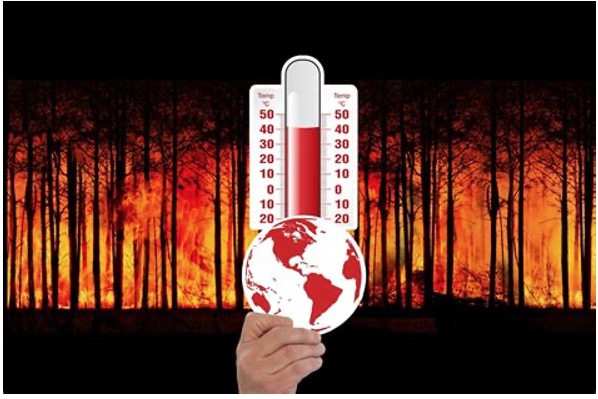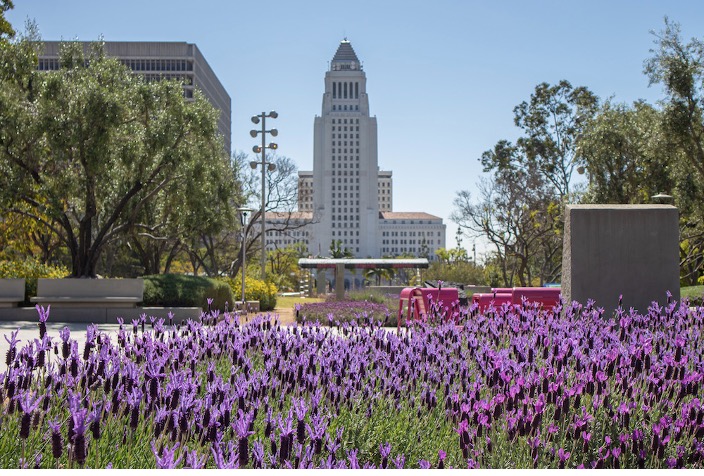Comments
PLANNING WATCH - Los Angeles celebrated Earth Day on Saturday, April 22. At LA City’s Hall, the holiday was barely noticed, although on April 24 the Department of City Planning briefed the City Council’s Planning and Land Use Committee (PLUM) on the Update of the Hollywood Community Plan. This presentation emphasized the plan’s alleged environmental benefits. Without a monitoring program, however, these benefits remain pure conjecture since the well-off tenants who can afford the expensive apartments that the plan promotes drive their own cars and rarely use mass transit. The updated Hollywood Plan will, therefore, lead to further declines in transit ridership, an “achievement” that makes the climate crisis worse.
Despite the bogus environmental claims invoked to sell the Hollywood Community Plan’s gutting of zoning and environmental regulations, there is nevertheless much that City Hall could pursue to address the climate crisis.
For example, City Hall could add two elements (chapters) to LA’s General Plan, as detailed in City Charter Sections 553-557. Since 2018 the State has also required all California cities to add an Environmental Justice element to their General Plans. So far, Los Angeles has not taken any steps to comply with this mandate.
Los Angeles also desperately needs a General Plan element that directly focuses on climate disruption. While former Los Angeles Mayor Eric Garcetti prepared an executive document that addressed climate change in Los Angeles, this temporary document could have become a permanent General Plan climate element. Unfortunately, no City official ever called for this option.
Los Angeles Mayor Karen Bass could, nevertheless, break new ground by directing the Department of City Planning to transform this abandoned climate document into a permanent General Plan Climate Change element. In fact, the Governor’s Office of Research and Planning has already prepared a Climate Change element template to assist this effort.
What else? The ethical principle of “Do no harm” should guide City Hall’s response to Earth Day. One source of harm are several land use practices that make the climate crisis worse:
- Investors and contractors net at least $500,000 for each older house they demolish to build and sell a big, boxy McMansion. Even though these monstrosities house the same number of people, they use much more energy. They have restaurant style stoves, 24/7 heating and air conditioning, pools and spas, and wide front driveways and garages for their high performance cars. The City has several tools to stop McMansions, especially Historical Preservation Overlay Zones, but their funding is inadequate. As a result, the list of communities requesting HPOZ’s is expanding.
- The City of Los Angeles grants nearly every submitted zone change and zone variance application to build taller, denser, (and pricier) apartment buildings. According to the Los Angeles Times, “About 90% of requests for general plan amendments, zoning or height district changes heard before the city’s Planning Commission and local planning commissions have been greenlighted since 2000, city documents show.”

If/when the City prepares and adopts the Environmental Justice and Climate Change General Plan elements, these document should address and monitor three current but flawed programs:
- Tree planting. The good news is that Los Angeles, like nearby cities Beverly Hills and Culver City, could support an excellent urban forest. We know what climate resilient trees can withstand Southern California’s worsening heat waves, droughts, and occasional atmospheric rivers. We also know how much comparable cities spend on their urban forests, about three times per capita what LA spends. Since you get what you pay for, LA’s urban forest is mediocre and shrinking. Money cannot solve every problem, but this one clearly needs more resources for the extensive planting and care of urban trees that can simultaneously mitigate and adapt to climate change.
- Sidewalks, ADA curb cuts, buffered bike lanes. Los Angeles has 9,000 miles of sidewalks, and most of them urgently need repairs. According to former City Controller, Ron Galperin, the Los Angeles is legally required to spend $1.37 billion over the next 30 years to rebuild its sidewalks and install ADA-compliant curb cuts. This averages $46 million per year, or about four times the $12 million the City paid in slip and fall cases in fiscal year 2000. Furthermore, the City Council adopted the General Plan’s Mobility Element in 2015, which clearly spells out, but poorly implements these policies. Considering the enormous climate benefits of walking, scootering, or biking for shorter trips, this ought to be a no-brainer, yet LA’s City Council has decided to slowly build out LA’s bike lane system through a bond issue, not current budgeting.
- First-last mile mass transit improvements. To increase mass transit ridership to the point that it reduces automobile use, every mass transit line and station should include extensive first-last mile public improvements. The specifics of these first-last mile features are detailed in numerous METRO and LA City Planning Nevertheless, METRO has ignored these policies and manuals when constructing new mass transit lines, such as Wilshire Boulevard’s Purple Line Subway. As for the City of LA, it has not provided any parking lots, pedestrian and bicycle interfaces, bus lanes, station area amenities, reconstructed sidewalks, streetscape, or way-faring signs for this and other METRO lines. What a way to run a railroad!
Furthermore, another approach to increase ridership, such as Kansas City’s fare-free mass transit, has ended in Los Angeles. It should be immediately reinstated and then widely publicized.
Earth Day should be celebrated in Los Angeles by ramping up the City’s response to the climate crisis. What I have outlined above is just a beginning, and the ball is in the court of our elected officials, both old and new, to turn short-term events into long-term climate actions.
(Dick Platkin is a retired Los Angeles city planner who reports on local planning issues for CityWatchLA. He serves on the board of United Neighborhoods for Los Angeles (UN4LA). Previous Planning Watch columns are available at the CityWatchLA archives. Please send questions and corrections to [email protected].)
















